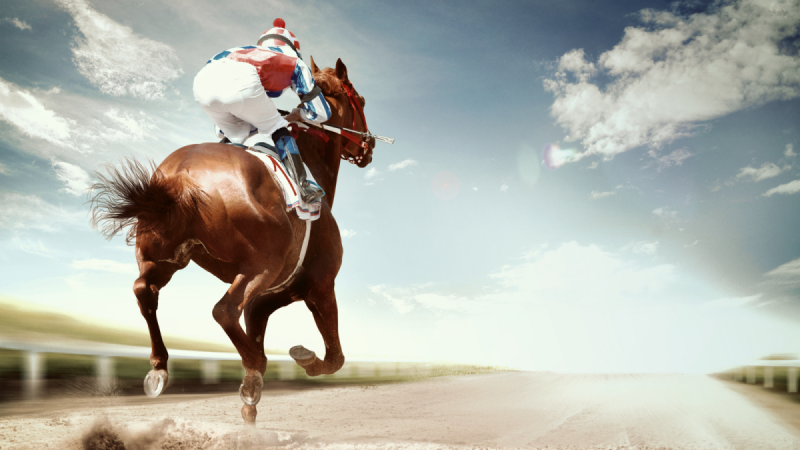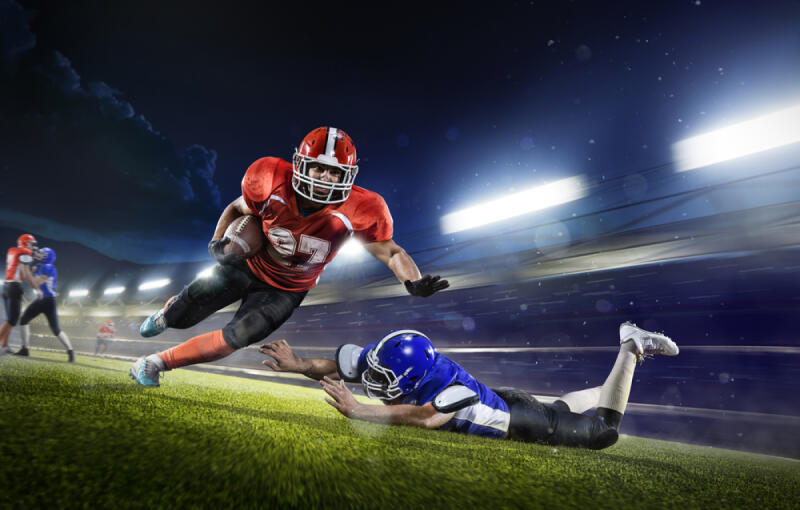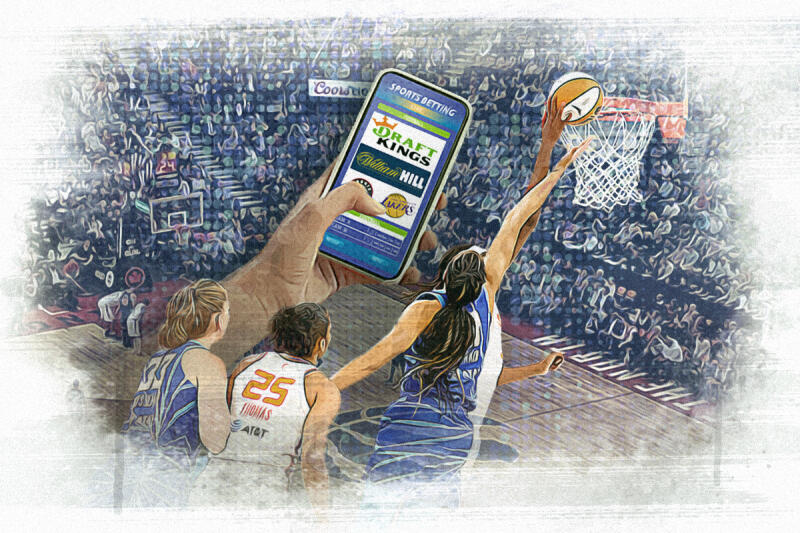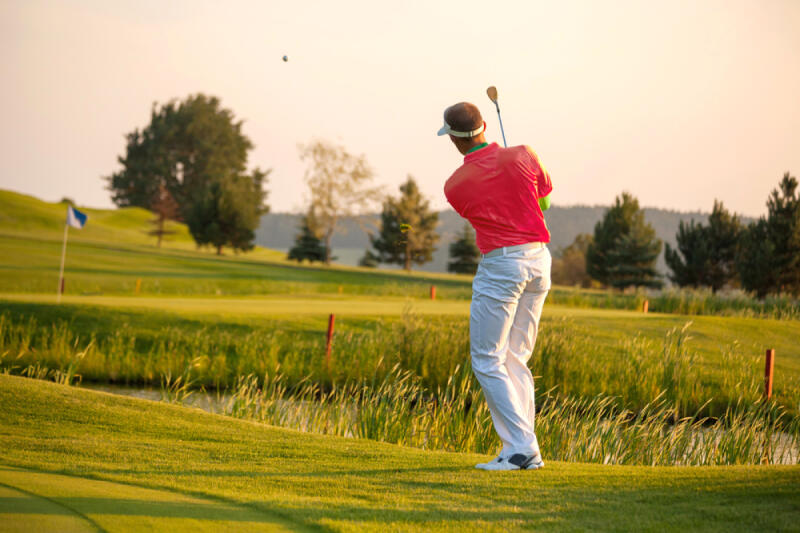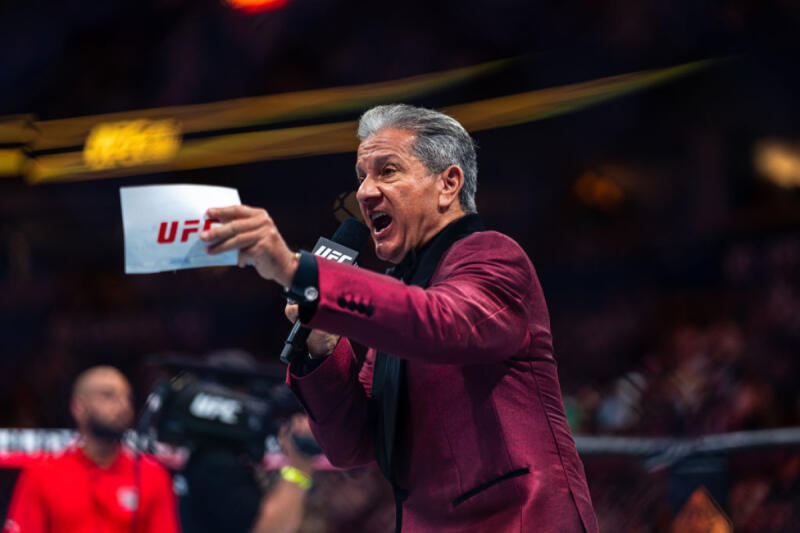Football is a hugely popular sport in the nation, but if you've never played it before, it can be difficult to understand. This is especially true if you did not grow up watching or participating in the game.
There will be 22 players on the field, all spaced out in a specific form with the oval ball in the center. If you're new to the game, you might not recognize all of their football positions.
Some positions in football are quite clear, such as the quarterback. But do you recognize the difference between an outside linebacker and an offensive back?
Positions on American Football List
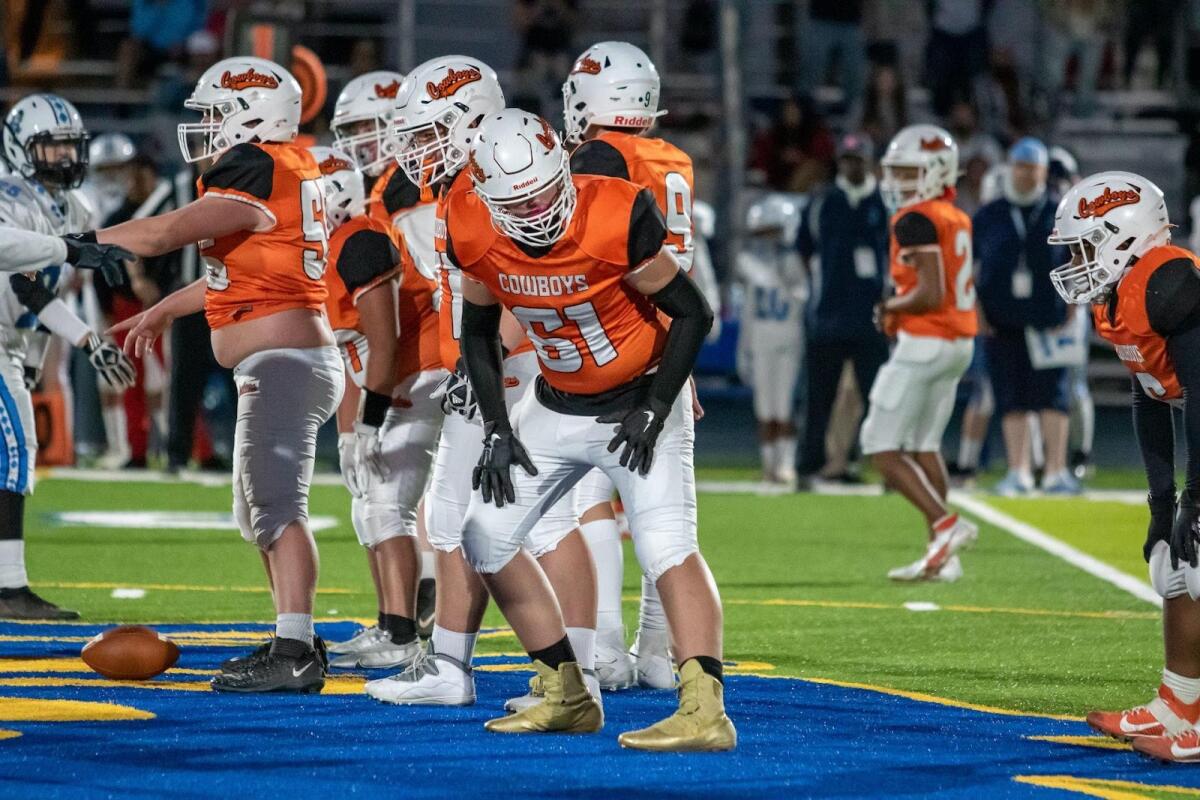
There was an era when a team's members shared more similarities than differences. Many of them played both offense and defense, and everyone had to know how to block and tackle at the very least.
However, the game has changed, as have the player placements. Players are now forced to become specialists, with each position granted a specific role at varying stages throughout the game.
Football positions on the field are now classified into three groups based on their functions and the stage of the game: offense, defense, and special teams. Here is a list of the football player positions:
Offense
- Quarterback
- Halfback
- Fullback
- Wide receiver
- Tight end
- Offensive tackle
- Offensive guard
- Cente
Defense
- Defensive end
- Defensive tackle
- Linebacker
- Corner
- Safety
Special teams
- Kicker
- Punter
- Long snapper
- Return specialists
Related: Make informed choices by checking our NFL Predictions.
Rules of American Football
The goal of American football is to outplay the opponent. As with most other sports, the team with the most scores at the conclusion of the game is named the winner.
Reaching the target line and penetrating the endzone with the ball earns a team 6 points. This is proceeded by a chance to score an additional point via a field goal.
There is also the option to go for an extra two points by making an additional attempt to cross into the Endzone. Because this is more challenging, unless the scenario calls for more points, the field goal is usually the first option.
All football games must be divided into four separate sessions known as "Quarters." Depending on the level of the football game, the length of each quarter will vary.
Quarters in the lower leagues will last 10 to 12 minutes. Longer quarters will be used in games with a higher level of experience. The NFL's highest professional football league has four quarters of 15 minutes each.
To begin the game, the winner of the coin toss chooses whether to go on offense or defense first. The team that chooses to defend first will have their kickoff team on the pitch.
Following each goal, there will be another kickoff in the same ways. And, at the beginning of the third quarter, the team that kicked off first will now return the kickoff from the opposing team.
Football Positions on Offense
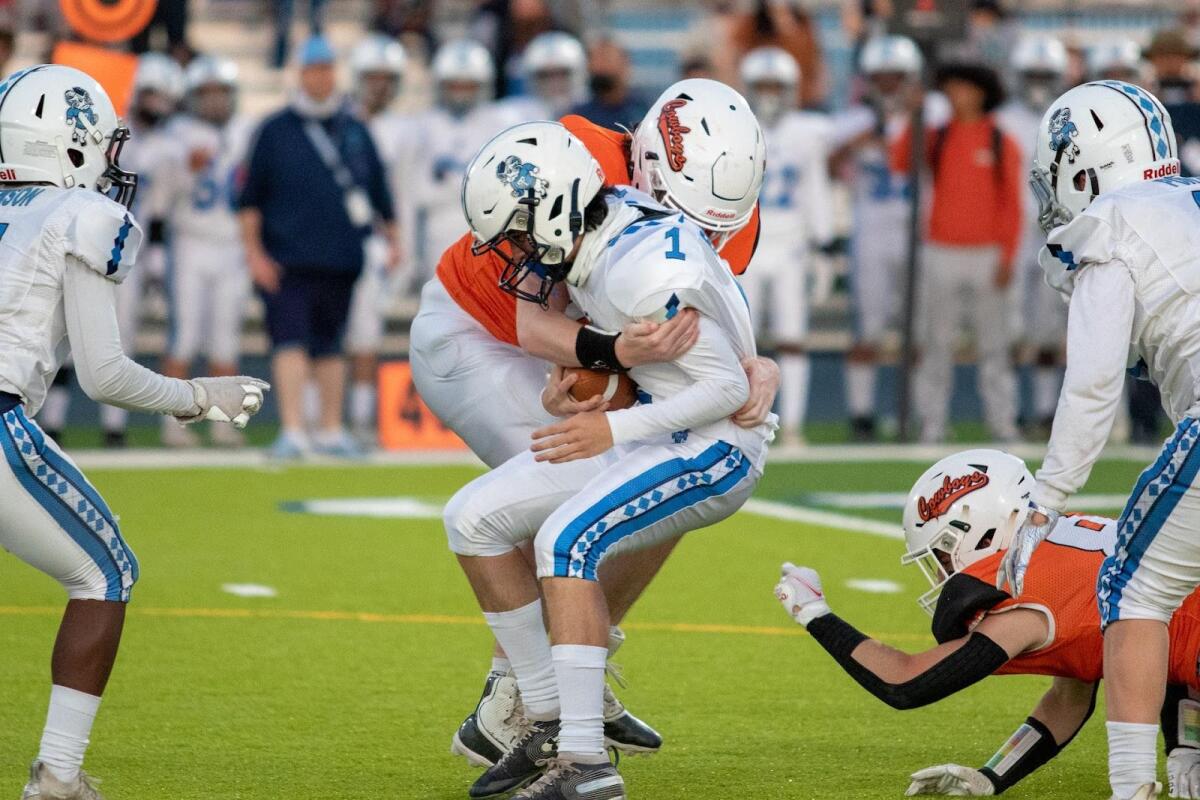
In football, the offensive team is the side that starts a game from scrimmage with the ball. The offense's purpose is to move the ball across the field, gain scoring chances, and ultimately get into the end zone.
A typical offensive play begins with the quarterback taking a snap from the center. He can then hand off the ball to a running back, throw to a receiver, carry the ball himself, spike, or kneel down.
The offense is divided into three groups: the offensive line, the offensive backs, and the receivers. The Offensive Coordinator directs the offense, determining offensive strategy and calling plays.
Read on to learn more about offensive football positions.
Offensive Line
In a standard football game, an offensive line typically consists of one center, two guards, and two tackles. The offensive line is ineligible to be receivers because their primary role is to protect the quarterback.
They rarely, if ever, touch the ball as part of the strategy, and there are even rules that prohibit them from doing so at specific moments. These linemen, however, are often the most powerful and largest players on the field, and their duties are critical in a game.
Offensive linemen spend long hours lifting weights because their primary purpose is to move other players out of the ball path. Therefore, professional and elite college players routinely bench press 500 pounds or more.
Linemen must perform bench presses, deadlifts, military presses, as well as power cleans. The goal of the lifting program during the off-season training should be on increasing strength, velocity, and muscular body weight.
Furthermore, depending on the team's offensive approach, a lineman may be needed to run nearly as much as the running backs. Big, muscular linemen that are slow just do not get the job done.
Lines Up
As previously stated, the offensive line is made up of five players. These offensive line positions must be strong enough to dominate opponents, fast enough to get in front of linebackers, and agile enough to block thinner, quicker defensive linemen.
Center
The center, as the name implies, is positioned at the heart of the offensive line. He tosses the ball to the quarterback and lays out blocking duties to the remaining offensive linemen before the action begins.
The physical toll of the center position is significant in its own way. Centers are typically tiny, but they compensate with a combination of excellent football IQ and a combative playing style that enables them to be the offensive commander up front.
Left and Right Guards
The guards stand on either side of the center. They were historically the greatest athletes on the field, responsible for constructing an impenetrable line to prevent defensive linemen from approaching the quarterback.
They are responsible for many of the same things as other offensive linemen but in a different fashion. Their ability to maintain stance without losing momentum is critical in allowing the quarterback time to pass.
Guards are still one of the most significant offensive football positions nowadays. The guard position requires a legitimate combination of strength and agility since the role demands the ability to take on gigantic defensive tackles while also pushing out on the perimeter for linebackers and other players.
Left and Right Tackles
The offensive tackles are responsible for preventing the opposing team's linebackers from crossing the scrimmage line. While they perform similar functions to guards and centers, they may be more involved in stopping both passing and running situations.
Offensive linemen may look huge and slow, but their role requires a high level of adaptive athleticism at their size. They constantly line up as the widest linemen on both sides of the line throughout the game.
If you've ever seen an NFL defensive end, you'll understand why offensive tackles are such an important part of any attack. These tackles are frequently left on an island during the game, and their involvement in a running game provides opportunities for exciting plays.
Attributes
Of all football positions, an offensive lineman is one of the most difficult to train for. Proper stance is the cornerstone from which a successful offensive lineman must work; it is critical that the lineman's muscle mass is appropriately distributed so that he stays balanced.
Furthermore, linemen will be required to make and maintain a block in order to complete a successful game, whether it be a passing or a running game. Making a good block for even six seconds can often result in a long offensive advantage.
Jersey Numbers
Linemen in the NFL can have jersey numbers ranging from 50 to 79. In the NFL, these are known as "ineligible numbers," which means that offensive players sporting such numbers are not permitted to run down the field in a passing game.
The numbering rule assists officials when determining penalties. However, a lineman may stack up in an acceptable position or in the backside. This is permitted as long as there are still seven guys on the scrimmage line, but one must first notify the referee of his plans.
Offensive Backs
This is the second group of an offensive football play, and it features the quarterback and running back.
Quarterback
The quarterback is the offensive centerpiece and, in many ways, the team's leader. When the quarterback receives the ball from the center, he will deliver it to either the running back or an available receiver.
Top quarterbacks not only understand their own offense inside and out, but they also learn their opponent's defensive schemes. Reading an opponent's defensive football formations will assist him in determining whether the intended play will work or whether he should tweak the play at the scrimmage line.
An elite quarterback must also be able to remain calm under pressure and make sound decisions about how to handle the game. This ability enables them to pass the ball to the receiver with the greatest chance of advancing down the field.
The finest quarterbacks are tall players who can see the ground better. Athleticism is also crucial, but most quarterbacks are paid for their passing skill and intelligence more than anything else.
Running Back
The position was once known as "halfback," but is now commonly referred to as a "tailback." Regardless of the name, these players are in charge of picking up the ball from the QB and carrying it as far as possible forward toward the goal line.
A running back must be a strong player. He is a team workhorse and, in many aspects, one of the most essential in terms of offensive output.
A running back can start anywhere behind the line of scrimmage, either on or off the offensive line. He may even be the player that runs behind the scrimmage line prior to the snap of the ball to set up a pre-planned play.
Receivers
Offensive linemen are not allowed to receive the ball, however, they are allowed to run it in rare instances. In most cases, however, they just don't.
The ones who carry the ball are receivers. Wide receivers and tight ends make up the offensive receivers.
Wide Receivers
One of the most well-known NFL positions in an American football league is wide receiver. They frequently appear on highlight clips owing to their great catching abilities and the frequency with which they score touchdowns in games.
Wide receivers are tall, athletic, and dynamic individuals that aim to outrun the defenders in order to get the ball further across the field. They are capable of doing everything that other wideouts can, but much faster.
Being physically strong is essential for a wide receiver. This includes not just being able to go across the midfield and take big contacts from a guard, but also maintaining a safe distance from other defenders.
Types of Wide Receivers
- Split end
A split end is an attacking player who is positioned farthest away from the core of the line. They are one of the seven players on the scrimmage line, and because they are at the edge of the line, they are eligible for receiving passes.
- Flanker
Because it was developed so long ago, the flanker role can sometimes be difficult to explain. Flankers, who spread out far like a split end, are not typically the primary focus of an offense and are generally entrusted with being the second alternative in passing plays.
- Slot receivers
The slot receiver earned its moniker from where he usually lines on the playing field. And because he works better outside the offensive line, he is frequently far more nimble and versatile in what he is supposed to do.
Tight Ends
On the field, the tight end is usually positioned between the line tackles and the wide receivers. When it comes to what a tight end plays, it boils down to three things: protecting, receiving, and pressing.
Tight ends are often slower than wide receivers, but they are almost always taller. Furthermore, many quarterbacks see tight ends as safeguards and, as a result, have excellent relationships with them.
Football Positions on Defense
When a team in American football is not in possession of the ball, it is on defense. They are in charge of preventing the opposing offense from getting points.
In football defensive positions, there are 11 players, just like on offense. It's a difficult task given the agility and skill of today's offensive players.
There are three layers: defensive line, defensive backs, and linebackers, and each has particular tasks. If each layer performs its job properly on a given play, the defense team ought to be successful.
The defense does not have to be as rigid as the offense. They can move around as much as they want before the snap. The plays are usually called by the middle linebacker.
Defensive Line
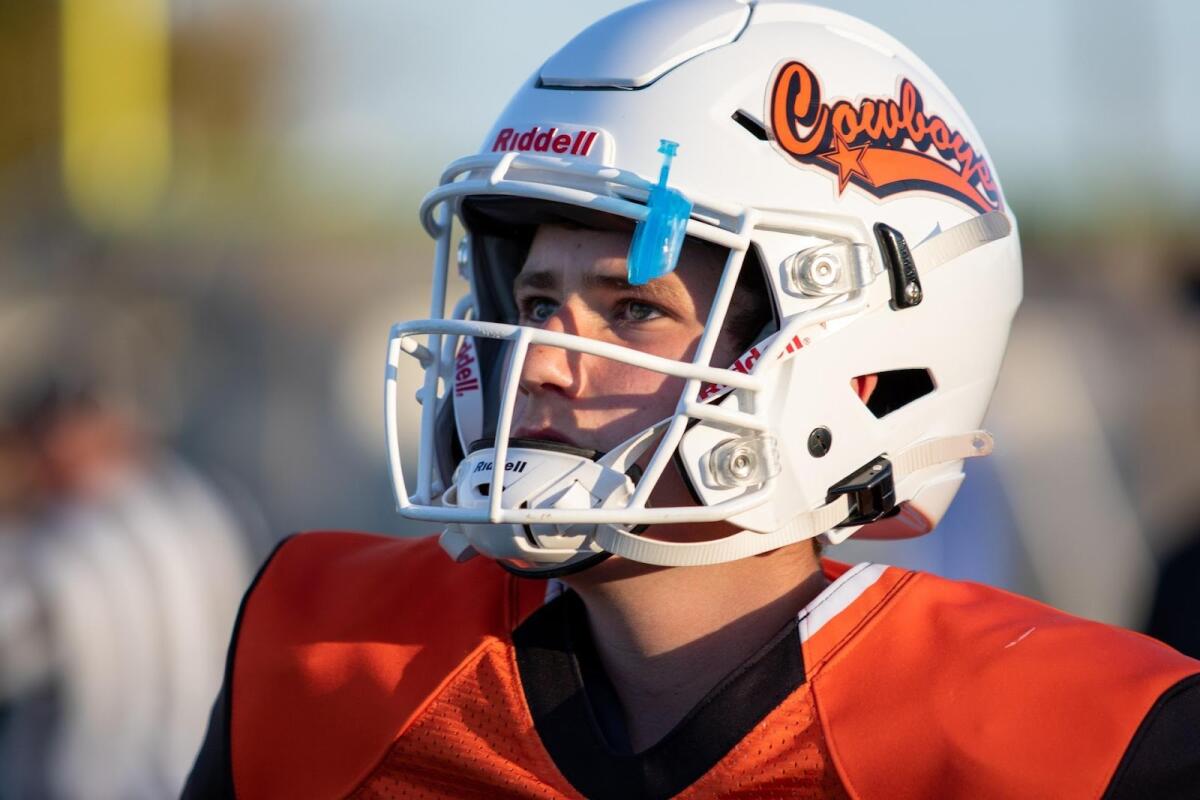
Defensive linemen are the first layer of defense, and the offensive team must account for them in their pushing tactics. Depending on the defense's formation, the defensive line consists of three or four men.
There are two roles on the defensive line: tackles and ends. These defenders are more engaged in preventing the run. The defensive line will have one or two tackles based on the playing scheme.
Unlike in many other sports, American football defense can be aggressive and violent. They are aiming to pressure the opposing quarterback and force the offensive team away from the scrimmage line.
Nose Tackle
A nose tackle (often called a nose guard) is a defensive lineman who lines up in the center of the defense. These players are usually the biggest on the field and are in charge of halting runs and putting pressure on the quarterback.
A nose tackle's primary role is to address holes in the offensive line. Because of his size, the nose tackle must not allow opposing players to push him from his position.
Because a nose tackle lines up in the midst of the formation, he applies pressure to the offensive line's interior. A dominant nose tackle is required for any coach who wants to be successful with a 3-4 defensive system.
Defensive Ends
Defensive ends have a unique blend of size and speed, as well as good vision, great perseverance, and an unwavering will to play aggressively. These players are positioned outside of the defensive tackles.
On practically every play, defensive ends will be pitted against offensive tackles. They must be athletic enough to avoid hefty offensive linemen while pursuing speedy, dodgy offensive players.
A brilliant defensive end can dramatically alter a defense's approach and influence a game on its own. It's why NFL teams don't hesitate to take defensive end studs with the first choice in the NFL draft.
Defensive Tackles
Defensive tackles, sometimes known as defensive guards, are linemen who accompany the nose guard. This position is in charge of both halting the run and hurrying the passer.
Defensive tackles are especially strong, making them difficult to block on one's own. They must have the power and size to compete with offensive linemen, as well as the speed and agility to pursue the quarterback.
This position is always positioned in the center of the defensive line. There will just be one defensive tackle on the game if you run a three-four scheme.
Defensive Backs
Defensive backs are an umbrella word for the second defensive unit. They excel in blocking runs after the catch as well as guarding against screens and pass patterns.
In other words, defensive backs will be primarily responsible for preventing crosses from being made. In most circumstances, four defensive backs will be on the field.
In passing situations, a defensive back can have two tasks. They can be assigned either zone or man defense. A DB is matched with a particular offensive player in one’s defense. The defensive backs must track this player throughout the play and prevent them from receiving a pass.
Lines up
The dime defense is a defensive concept in which six men defend the ball. The nickel defense, on the other hand, is a five-man defensive line that is utilized to defend tight ends and the wide part of the field.
The more backs a defense plays, the fewer men are available to play defensive line. To compensate for a bigger number of defensive backs, teams must plan for stronger linebackers, cornerbacks, and defensive linemen.
Types of NFL Defensive Backs
- Strong safety
In today's American football, strong safety functions almost as something of an extra linebacker. A strong safety will begin the game on the strong side of the game, based on how the offense aligns.
If there is no tight end on the pitch, the quarterback's dominant hand determines the strong side. In these cases, for example, if the QB is right-handed, the strong side is the right flank of the pitch.
Because strong safeties are primarily concerned with preventing the run, they will frequently play near the scrimmage line. He may fall in line several yards in the defensive backfield and must be quick enough to block the throw.
- Free safety
Free safeties are more comparable to cornerbacks in height, abilities, and attributes in comparison to linebackers. He will begin the play by lining up on the opposite side of the strong safety.
If any of the football offensive positions gets beyond the free safety, that guy is set for the sprints toward the goal line. As a result, free safeties are typically more concerned with pass defense than with run defense.
When confronted with a run, the strong safety might creep toward the line of scrimmage and become even more active in attempting to tackle the ball carrier. Meanwhile, a free safety must stand back and analyze the action.
- Cornerback
A cornerback is a football defensive position that is primarily responsible for preventing the other team from making forward passes.
Corners are unlikely to be a key part of any run defense, but they must be prepared to step up when needed, particularly if a ball carrier is approaching.
They will have to beat the blockers on running plays because they are lined up against the wide receiver. When opponents rush, they anticipate their wide receivers from containing the cornerbacks.
Because of the agility of wide receivers, speed is one of the most important factors in being a cornerback. As long as a corner has adequate speed, he or she should be able to catch up with receivers.
- Nickelback
The nickelback used to be a defensive player who saw action only on decisive passing downs. The role gets its nickname from the fact that there can be five secondary players on the pitch in certain scenarios.
With teams electing to throw more and extend the ground these days, many defenses have responded by deploying a nickelback on virtually all turnovers. This has elevated the nickelback from a hardly ever used substitute to a starting player.
Nickelbacks are specifically taught to master the technique of shielding receivers. They typically cover slot wide receivers, who are more inclined to run direct routes through the center of the field and to the wings.
Physical Attributes
A defensive back's enjoyment in a game is obtained from game contact. Those who prefer aggressive play and physicality will make shots.
To run good defense, a team's secondary must be powerful. A defensive back's physical qualities are generally focused on quickness and agility. Athleticism is vital in general, but an athlete who is slow on his feet or lacks agility cannot play well in the secondary.
A quality defensive back's mental traits are just as vital as physical ones. A player with cowardly tendencies will eventually lose.
Jersey Numbers
The current NFL regulations require defensive backs to have jersey numbers ranging from 1 to 49.
Linebackers
Linebackers are the defensive backs who play between both the defensive line and the secondary. Their placements are determined by the defensive arrangement chosen by the team.
The linebackers are the team's primary tacklers and rush blockers. They will be in zone coverage on most plays, covering a tight end or a receiver out of the backcourt.
Two inside linebackers line up against the offensive guards in a 3-4 formation. They must be able to go one-on-one with blockers, prevent running routes down the middle, and defend against a throw.
Linebackers share gap responsibilities with the defensive line. Linebackers plug openings in the defensive line created by linemen and make tackles when the receivers try to break through.
Middle Linebacker
The middle linebacker is in charge of anticipating what the offense will do and responding with a blitz or a shift in coverage. Then, and only then, must he defend a massive tight end or make a bone-chilling tackle.
The middle linebacker usually lines up 5 yards back, opposite the offensive team's middle. This position enables him to take fast steps to the left or right to cover the gaps and bring the run to a halt.
Middle linebackers are often big, muscular, and hard-nosed. In most defensive tactics, he is the talkative leader, shouting out forms and strengths and directing adjustments. He is also an important interpreter for linebackers and defensive players.
Outside Linebacker
The "Will" linebacker, often known as an outside linebacker, is one of three linebackers on a typical defensive unit. Outside linebackers are primarily tasked with halting the run, although they can rapidly change into pass defenders when necessary and are usually assigned to slot receivers.
On the weak side of the formation, the outside linebacker splits the "B" gap. This puts him in a good position to prevent the run, but it also gives him momentum to drop in support or defend the back out of the scrimmage.
Outside linebacker really is the most athletic of the three linebacker positions on the field. They are not afraid to get physical and can instantly read plays.
Other Football Positions
Place Kicker
In many circumstances, the placekicker is also the team's kickoff expert or punter. Until about the 1960s, the kicker was nearly always doubled at some other position on the squad.
As the period of "two-role" footballers gave way to increasing specialization, teams would hire a kicker expert. On the professional level, most squads hire multiple players to undertake the responsibilities due to the differences in methods required, to eliminate leg strain, and reduce the chance of injury.
Today, practically all placekickers are "soccer-style" kickers, striking the ball from several feet to the left. In professional football, straight-on kickers are unusual these days.
Punter
In football, a punter is a special team player who dropkicks the football to a more problematic location on the field.
When a team confronts a fourth down, they punt. If they do not convert on fourth down, the other team will receive the ball at its spot. Punters are utilized only a few times per game, but their limited plays can have a significant impact.
Kick Returner
A kick returner will take the ball and must dodge all ten blockers as well as the other team's eleven defenders. It is called a solid return once the returner gets over the twenty-five-yard marker.
Upback
The essential role of an upback is to serve as the punter's last line of defense. This position is closest to the punter and is responsible for blocking incoming defenders.
This position is not employed by all punting squads, but it is critical when it is. Because upbacks are much further back in the offensive line, they are not always the first to reach the punt returns.
Holder
In football, a holder is a person who is responsible for carrying the football while the kicker shoots a field goal.
The holder must catch the snap prior to actually holding the ball. If the holder does not catch the snap, the ball will be dropped in the attacking backfield.
Long Snapper
A long snapper enters the game to snap the ball on both field goals and punts. A long snapper usually takes only very few snaps per game.
Punt returner
A punt returner's job is to make the catch after the ball has been punted and provide his team with a better field position. Punt returners once in a while return kickoffs and typically play different American football positions.
Gunner
This is a unique position in that it is only utilized on special teams when there is a punt. Its sole purpose is to pressure and confront the punt returner. If they are unable to do so, they must deliver a substantial burden to the punt returner.
Wedge buster
A 'wedge' in football is a group of three to five players on a kick return who serve as a wall of defenders for the kick returner. A "wedge buster," on the other hand, is that crazy kicking squad member whose duty it is to break up the wedge by sprinting into it as quickly and as forcefully as he can.
Football Positions FAQ
What exactly is a blitz in football?
A blitz is a single-down defensive effort that involves the deployment of five or more linemen to the scrimmage line in order to interfere with the offense. The actual goal of the blitz in most cases is to rush the quarterback.
In football, what is an onside kick?
In American football, an onside kick happens when the kicking team intentionally kicks the ball a small distance. When done correctly, kicking teams can provide their offensive teams with tremendous opening possession.
Where do running backs start?
Running backs take their places in the backfield. This position is normally behind the quarterback, but it could also be next to the fullback or guard.
Our editorial content strives to be highly informative and educational to our audience, especially for visitors who are new or relatively new to analyzing and predicting sporting event results. All of our content is created by informed writers with backgrounds in their subject area and reviewed for omissions or mistakes.
Our editorial team is run by individuals with many years of experience in digital publishing, editorial, and content production. Our editorial content is always marked clearly in any instances where it may be sponsored by a third party, though it is still reviewed by our staff to ensure it remains consistent with our company mission.
- Popular
- Latest

